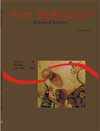Prevalence, seasonality and infection intensity by <em>Diplostomum (Austrodiplostomum) </em> compactum Lutz, 1928 (Digenea, Diplostomidae) in fish of the Volta Grande Reservoir, state of Minas Gerais, Brazil
Abstract
The present study was conducted in the Aquaculture Station of Hydroeletric Power Station situated in Volta Grande Reservoir, MG, Brazil. Seventy freshwater corvinas, Plagioscion squamosissimus, and 66 tucunarés, Cichla ocellaris were captured bimonthly from April 2000 through April 2001 with net and hook. The helmints were identified as Diplostomun (A.) compactum which showed the highest prevalence in the corvina’s eyes in April 2000 (70%), February 2001 (80%) and April 2001 (60%), while in tucunaré occurred in April 2000 (33.3%), August 2000 (18.2%) and October 2000 (18.2%). Nevertheless, increase in the mean intensity of parasites was related in April (6.6), June (6.0), August (18.5) 2000 and February (5.7), April (4.8) 2001 for corvina and in August (16.0) and October (7.0) 2000 for tucunaré. Corvina’s females showed infection during all period, while males did not show the same prevalence in June 2000 and April 2001. On the other hand, tucunare’s males were infected in all months while females in August and October 2000. The highest prevalence in corvina was observed in the months which presented elevated water temperature (April, October, December 2000 and April 2001). The number of parasites collected in corvina on February 2000 was higher than the one observed in August 2000. The same was not observed for tucunaré. This work demonstrate corvina’s high susceptibility to metacercariae of Diplostomum.Downloads
Download data is not yet available.
Published
2008-05-13
How to Cite
Martins, M. L., Mello, A. de, Paiva, F. C., Fujimoto, R. Y., Schalch, S. H. C., & Colombano, N. C. (2008). Prevalence, seasonality and infection intensity by <em>Diplostomum (Austrodiplostomum) </em> compactum Lutz, 1928 (Digenea, Diplostomidae) in fish of the Volta Grande Reservoir, state of Minas Gerais, Brazil. Acta Scientiarum. Biological Sciences, 24, 469-474. https://doi.org/10.4025/actascibiolsci.v24i0.2349
Issue
Section
Biology Sciences
DECLARATION OF ORIGINALITY AND COPYRIGHTS
I Declare that current article is original and has not been submitted for publication, in part or in whole, to any other national or international journal.
The copyrights belong exclusively to the authors. Published content is licensed under Creative Commons Attribution 4.0 (CC BY 4.0) guidelines, which allows sharing (copy and distribution of the material in any medium or format) and adaptation (remix, transform, and build upon the material) for any purpose, even commercially, under the terms of attribution.
Read this link for further information on how to use CC BY 4.0 properly.
0.6
2019CiteScore
31st percentile
Powered by 

0.6
2019CiteScore
31st percentile
Powered by 











1.png)




3.png)













